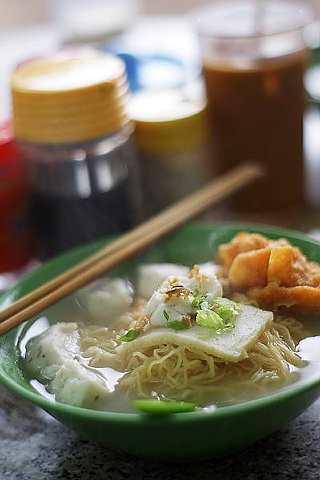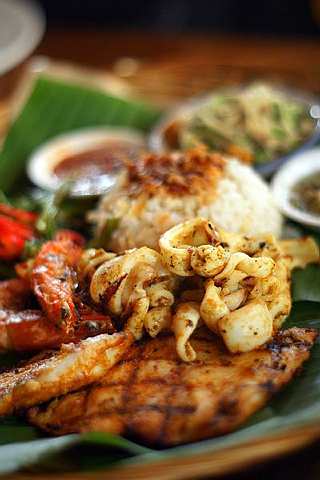It’s not at all uncommon these days to see people snapping pictures of their food, be it at roadside stalls or posh restaurants. It has become a norm for people to photograph their meals, and share it with their friends on Facebook, Twitter or at some forum or another.
As a blogger and photographer, I am also one of those shooting away on my camera at the dining table. I am also into food photography because I like how the food that we take for granted can look so enticing in pictures.
Food photography is an art in itself, and there are some basic rules to observe. With our obsession with food, there are plenty of opportunities to practise. So, we might as well learn to take good food pictures.
Composition
Not everyone will own a DSLR camera, and most people generally shoot with a compact camera or their cellphone camera. But even when you don’t have top notch equipment, there are some elements that are within your control, such as the composition of the photograph. Generally food will not look good when shot from far. You need to dive in and capture the details and textures of the subject, such as the texture of the beef patty in a burger or the curl of the cake icing.
In order to achieve this, we need to place our cameras at a 45° angle, set the aperture to around f2 to f2.8 so that the background and foreground of the food will be blurred.
If you are using a point-and-shoot camera, adjust the setting to the macro mode, and go as near as you can without compromising the sharpness of the image.
Another important thing is to take these shots vertically, as this narrows the viewers’ perspective and forces their attention on the food.
Lighting
Another important factor to be mindful of when taking food photograph is the lighting. Since we are not doing professional studio shots, we don’t get controlled lighting like a flash or softbox. Therefore we should only take these photographs when there is good lighting, such as in bright restaurants or spots with natural light from the window.
So, where should you place the dish? Well, this is very subjective. Some prefer the light to be at the back of the food, some in front. Whatever it is, do not place the dish where the light is shining right at the center of it. Position the plate so that the light source is somewhat to the side of the plate.
If you personally own an external flash, then it would be great. Just plug it onto your DSLR, attach your portrait lens and you are on your way in obtaining a great shot of whatever food in front of you.
Try some flash position variations to achieve the shot you like. Pointing it a little to the side will bring out the contrast. Pointing it straight up to the ceiling will light up every part of the food giving the viewer a clearer view.
Table etiquette
Yes, food is served on the table. Yes, you have a camera with you. Yes, your friends know that you love shooting food pictures but that doesn’t mean you can have all the time you want trying to get the perfect angle for your shots. Know your limits.
Most of the time when we are trying hard to bring out the uniqueness of the food, we forget that we are testing our dining companions’ patience. They are probably hungry and want to eat.
Therefore, it’s always best to ask for permission, snap quickly and be done with the dishes. Now, how do we do this? From practice and experience. Once you enter a restaurant, you should look around and find out what settings you need on your camera in order to get “nice pictures”. Set the camera beforehand and be ready when food is served.
Never hog the plate just because you have not gotten the right settings to capture the best angle.
With great food, comes great responsibility. That’s how it is if you like to eat, blog and take food photographs.
> Check out more of Jason’s food pictures on smashpop.net.




Tell us what you think!